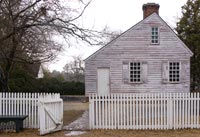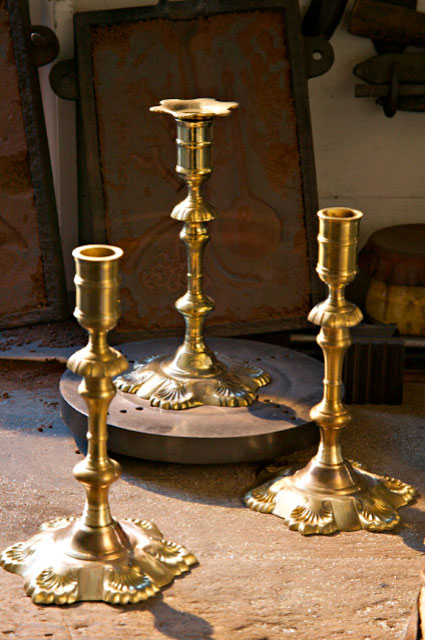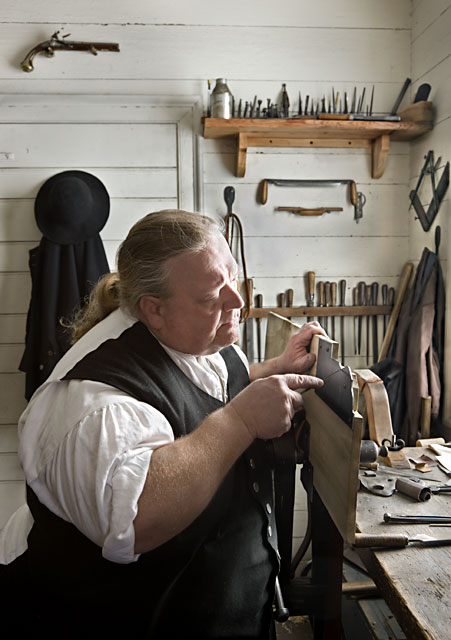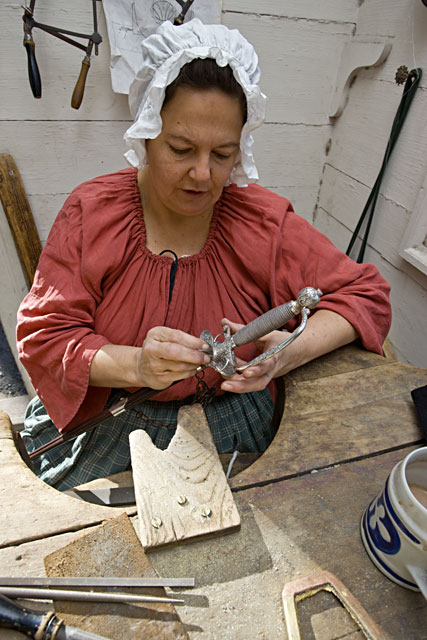Page content
Founder
A Williamsburg family tradition
William and David Geddy advertised in the Virginia Gazette that they were carrying on the gunsmith’s, cutler’s and founder’s trade. These two brothers were following in their father’s footsteps when they served an apprenticeship to their father James Geddy Sr. Their newspaper ad ran on August 8, 1751.
David and William Geddy advertised their trade in Hunter's Virginia Gazette, August 8, 1751.
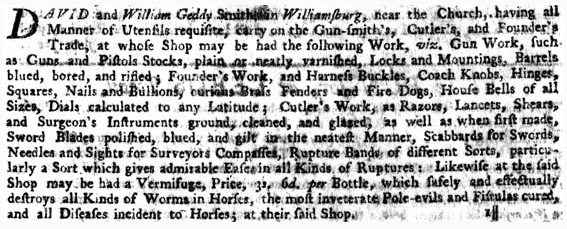
Geddy family ran brass foundry in Williamsburg
Brass founders like William and David Geddy, and their father James before them, melted both brass and bronze and poured them into molds to form andirons, bells, coach and harness fittings, shoe buckles, sword hilts, furniture hardware, and many other things.
Colonial foundry men used a method known as "sand casting."
A mold was created from a fine sand and clay mixture – a material that could withstand the 2,000° F-temperature of the molten brass.
The founder began by creating a pattern made of wood or a soft metal like lead or pewter.
Next, he packed the moistened molding sand over the pattern – first on one side, then the other. The mold was made in halves so that when the packing was finished, the founder could open the mold and remove the pattern.
He then cut channels in the sand so the molten metal could flow into the pattern. Smaller channels let air and gases escape from the mold as the metal flowed in.
The two halves were then put back together and molten metal poured into the mold.
Once the metal cooled and turned solid, the mold was broken apart and the casting removed for further filing and polishing.
Today in the Historic Area
Today the founders carry on their trade at the Geddy site, near the center of the Historic Area, using the same technologies as their 18th-century predecessors.
Learn more:

